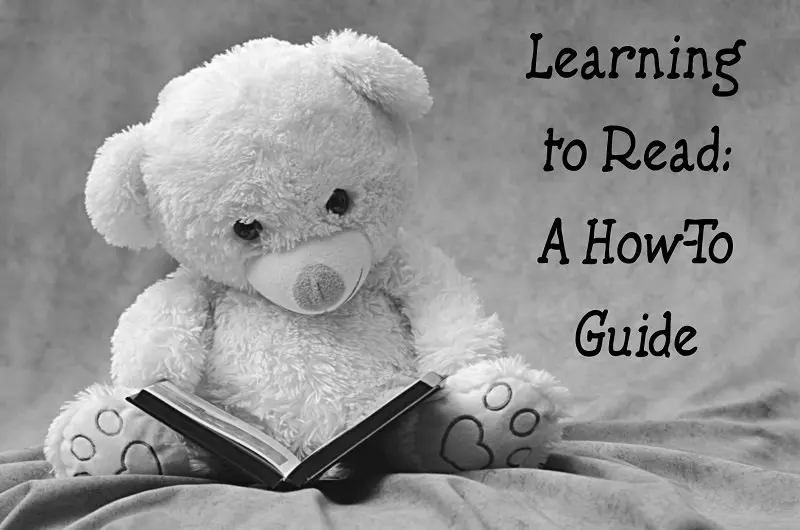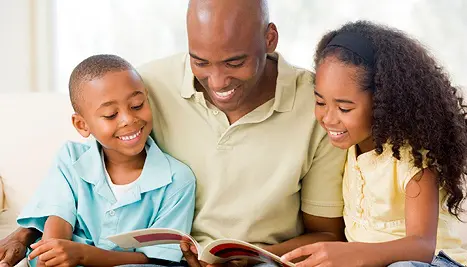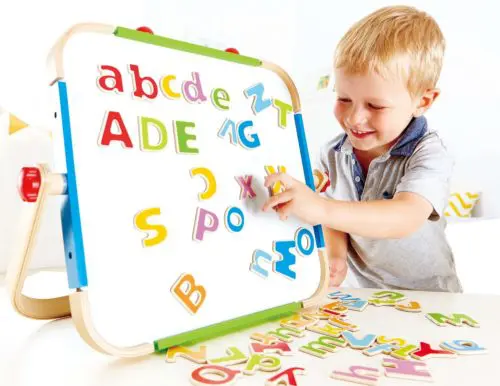I can’t remember what blog post I was reading a while back, but the author was talking about raising children and said something like, “I’ve never had to teach a small human to read before!” I totally know how she feels. After having a kid, I’m starting to believe that we shouldn’t be allowed to procreate without a degree in child development and early childhood education. I know that there’s all this stuff that my kid should/wants to/needs to learn, but I’m at a loss for how to teach her. So I did what any other concerned parent would do and asked Google! So here you go: here’s everything I know about learning to read.
Step 1: Read to Your Children
You know the best part about helping kids learn to read? The most important thing you can do is incredibly simple and easy: read to your children. Do it from birth on. Why?
- Reading aloud exposes your child to language—including patterns, words, and ideas you may not use in everyday speech. I don’t tend to go about my day rhyming my conversations with my child, or talking about children who eat books, or what holidays pigs celebrate.
- Reading to your toddler/preschooler helps them understand how books “work.” How to hold a book so the print is right side up, what direction we read in (left to right in English), and that we read the page top to bottom, what direction we turn pages when we are ready to move on, and that words and images are different.
- Reading together helps children experience reading as a fun thing to do!
- Exposure to written language also helps children begin to understand that the language they hear can also be communicated through written symbols (letters), and young children can begin to identify letters and even some of the sounds they make.
- Asking questions about the stories (do you see the ___, can you find/show me the ___, what just happened, what do you think will happen next, why did/do you think something happened or a character behaved a certain way, how do you think the character feels) keeps them engaged and helps with comprehension. Why do we want to improve comprehension? Because it doesn’t matter what your child can sound out, pronounce, or identify if they don’t understand the words they’re reading.
Check out Dolly Parton’s Imagination Library; your child might be eligible to receive free books until they turn five!
Step 2: Learning Letters
Next step: learning letters. Read alphabet books together. Play with alphabet toys. Don’t be afraid of apps, either! One of my daughter’s favorites from the time she was two has been Endless Alphabet (all uppercase letters) and now that she’s an “emerging reader,” she is also loving Endless Wordplay (lowercase letters) and Endless Reader. They’re not free, but they’re awesome—and not annoying. Kids can also learn letters using their bodies and through play. And don’t forget to look for letters when you’re out and about. We had no idea that my daughter was learning her letters (thank you, amazing preschool) until she started pointing them out on signs when we were running errands or out to eat. Make finding letters a game!
Step 3: Practice
Once your child is identifying letters, start working on word families. These are words with the same ending, but a different beginning like “ham” and “yam.” It helps children practice their rhyming skills and also gives them a vocabulary boost because they know what “-am” sounds like and they only need to figure out the beginning part of the word to know what it says.
Now, there’s some debate about sight words, but I think they have their place. The sooner your child can identify simple, commonly occurring words like “a,” “the,” “in,” “said,” etc., the sooner they can move on to comprehending and sounding out the more complicated words that are more likely to be telling the unique story.
That being said, please don’t drill your child with sight words! I like to start with the book cover and title page and ask my daughter if she can identify any sight word she’s learning in school; it’s like a hide-and-seek game for her. If you’re introducing sight words, or reinforcing what your child is learning at school, have fun with it!
And here’s what many of us think about when we think learning to read: phonics and phonemic awareness. (In case you’re wondering, phonemes are units of sound. Which sounds really complicated and technical and intimidating.) Learning sounds is a tool for children to use as they discover how to sound out (or decode) words.
This is one of my least favorite parts of learning to read because it takes forever. But I know that my parents and teachers sat down and went through the process with me when I was young. It’s time for my impatient self to chill out and pay it forward! It’ll be worth it when my daughter reaches her goal of being able to, as she says, “read in my head like you and Daddy.”
Oh, and one more thing. Like so many skills, your child will start reading when they’re ready. If you feel your child is significantly behind their peers, you can talk to their teacher or to your pediatrician. I was starting to worry because my daughter has been a few months behind her friends in learning to read, but three days ago, she sat upstairs and read aloud (with her dad’s patient help) a whole book by herself at bedtime.
She was so proud! Two days later, she came into our room after her alarm went off to ask how to pronounce a word (“plip”) in a book she was working on reading after she woke up early, and then she read another book aloud at bedtime. It was like a switch flipped and she’s suddenly wanting to learn what this reading thing is all about! And I’m glad we didn’t push her or get frustrated because we had friends who are more proficient readers, or we might have ended up having a negative effect on her desire to read.
To sum it all up: Read aloud to your child. Practice, practice, practice—but remember to keep it fun! And have patience. It can take time to learn to read, but it’s one of those amazing developmental journeys to watch your child take.



